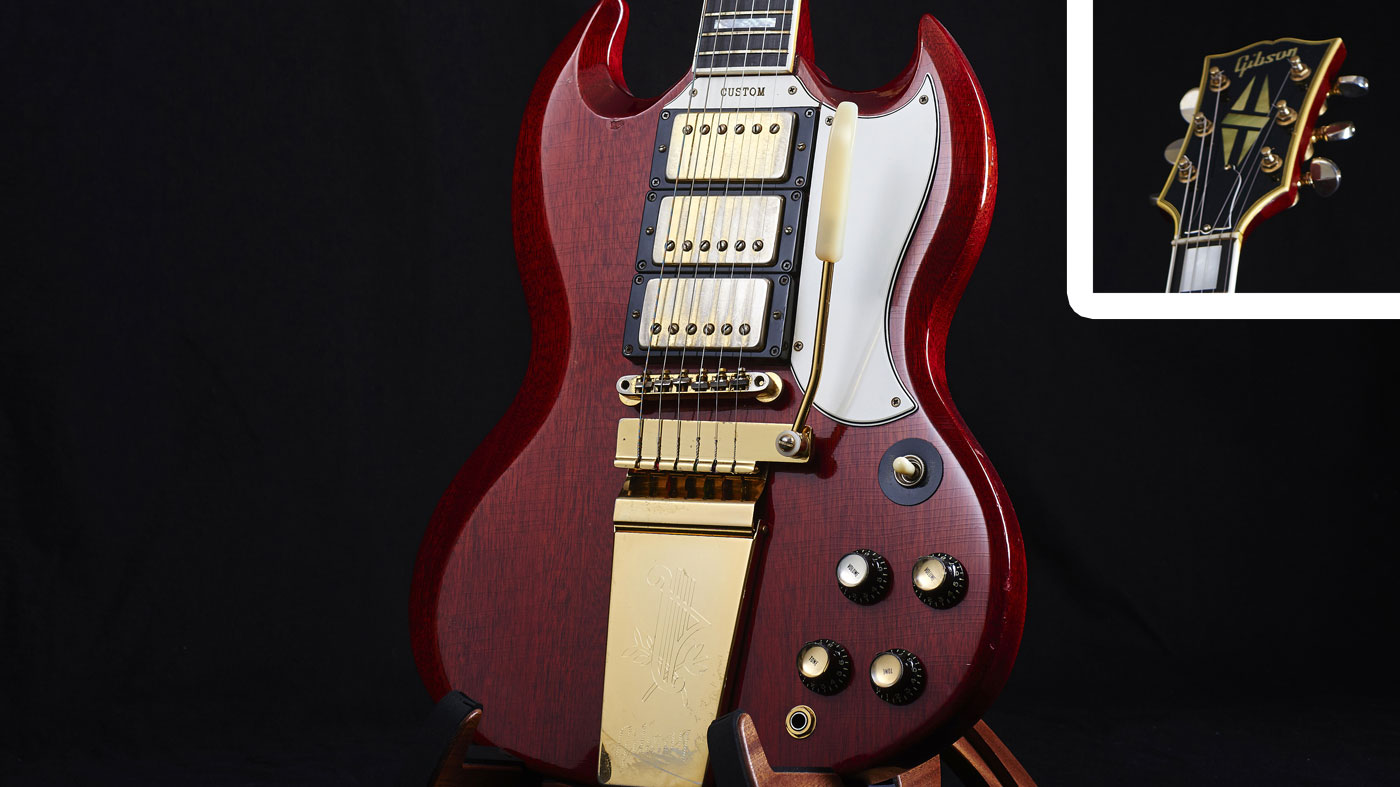Classic gear: '66 Gibson SG Custom
An uncommon gold and cherry Custom

White, three-pickup Les Paul/SG Customs built during the brief period that Les Paul’s name was also associated with the SG body shape are relatively familiar.
Less commonly encountered are three-pickup Customs built after Gibson and Les parted ways and this now-iconic model was officially renamed the SG in 1963. This glorious ’66 SG Custom is a rare example of that, finished in Cherry Red with opulent gold hardware and a Maestro vibrato.
When it’s painted the standard colour of Cherry Red with the gold hardware, it just makes that guitar explode
“I love the SG custom when it’s painted the standard colour of Cherry Red with the gold hardware, it just makes that guitar explode,” veteran vintage guitar trader David Davidson, who is now curator of the Songbirds Museum, comments. While we’re on the subject, David also points out a pristine 1961 Les Paul/SG on the other side of the room that has an interesting imperfection.
“On one side of the headstock, the three ‘snot green’ Kluson tuners are in pristine condition. But on the other side, all three are shrivelled - something you’ll see on a lot of old Gibsons. It struck David as mysterious why one side should be so different to the other.
“I got the ’61 out of a music store in Hackamore and it had really never been played. So I was very interested in knowing why only three of the tuners had shrunk so much, because that’s always been a big question. Why does the celluloid shrink?
“I actually got my first real answer to that question on that day. So that guitar was stored on its side, and those three tuners laid against the crushed pink velvet in the case - which is held in with hide glue. So I did a simple Google search for the reaction between hide glue and celluloid, and found out that the celluloid was going to shrink. So I said, ‘Well, that’s interesting, that’s why only three of the tuners shrank’. If the guitar had been laid on its back, and all six tuners had touched the lining, all six tuners would’ve shrunk.”
Want all the hottest music and gear news, reviews, deals, features and more, direct to your inbox? Sign up here.
Jamie Dickson is Editor-in-Chief of Guitarist magazine, Britain's best-selling and longest-running monthly for guitar players. He started his career at the Daily Telegraph in London, where his first assignment was interviewing blue-eyed soul legend Robert Palmer, going on to become a full-time author on music, writing for benchmark references such as 1001 Albums You Must Hear Before You Die and Dorling Kindersley's How To Play Guitar Step By Step. He joined Guitarist in 2011 and since then it has been his privilege to interview everyone from B.B. King to St. Vincent for Guitarist's readers, while sharing insights into scores of historic guitars, from Rory Gallagher's '61 Strat to the first Martin D-28 ever made.


